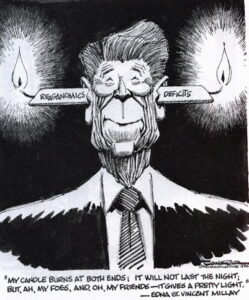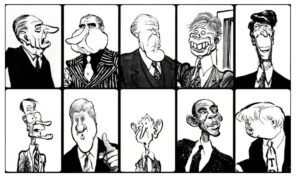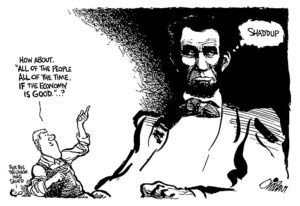One image is all we need to see a problem in a leader’s words or actions.
A new theatrical documentary on the work of political cartoonist Pat Oliphant is running in a few theaters, but even a preview of The Savage Act: The Life and Cartoons of Pat Oliphant is a useful reminder of the wonderful pen and ink drawings that used to run daily in most city newspapers. As with Oliphant, sometimes it was a poison pen.
Oliphant was a political cartoonist at The Denver Post. I was lucky to grow up seeing his irreverent take on the self-important political leaders of the day. We have social media artists who carry on the tradition of puncturing the pretenses of our leaders, often using fake photos. But many are amateurs compared to the political cartoonists that thrived at newspapers through all of the 20th Century. Along with Herblock, Mike Luckovich, Paul Conrad and others, Oliphant offered timely jabs at officials who favored false but sober explanations for their actions.
Where contemporary political humor focuses more on the visual, most of the older breed included a verbal tag that added potency to the images. The economy of the images set the tone, and the text give them irony and bite. Think of Stephen Colbert as the long form equivalent to the one-off cartoons that Oliphant and his peers turned out on almost a daily basis. In the 10,000 cartoons he contributed—eventually winning a Pulitzer Prize—he made the case for this wonderful form as “a serious expression of political thought.” Luckily, the Los Angeles Times Syndicate was among the organizations that spread the work of these master commentators available to many more newspapers.

Rhetorically, a good political cartoon is a synecdoche: a single and potent representation of a much larger phenomenon. One suggestive image and its language is all we need to pick up on a a problem with a leader’s words or actions. Evocations of irreverence are common in these efforts to puncture pretense.
Some great work by newer artists can still be seen in Politico, the New York Review of Books and the New Yorker. But this group was never more powerful than when they captured the eyes of readers anxious for their daily fix from their local newspaper. Count the loss of this daily political art as one of the casualties in the decline of American newspaper readership.


